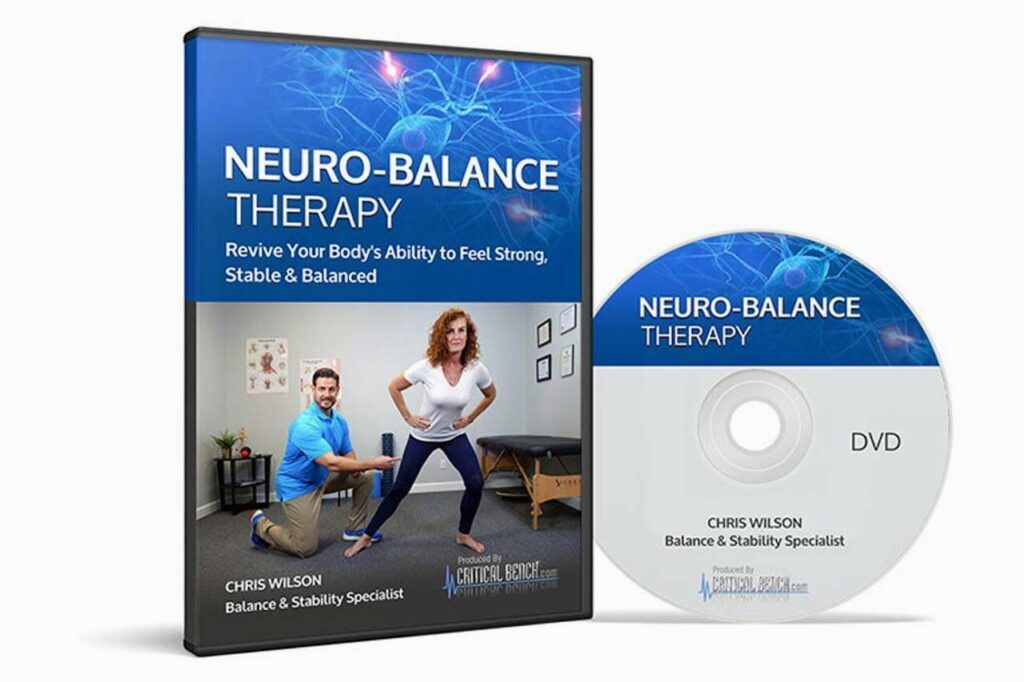Introduction
Neuro-Balance Therapy has emerged as a notable program in the field of balance improvement and fall prevention. Created by Chris Wilson, a certified personal trainer and balance specialist, this program takes a unique approach to addressing balance issues, particularly focusing on the neural connections between the brain and feet. The program has gained attention for its simple yet scientifically-informed methodology, designed to help people regain their confidence in movement and reduce the risk of falls, especially among older adults.
Program Overview
Neuro-Balance Therapy is a comprehensive program designed specifically to enhance foot stability and prevent falls by targeting and strengthening the neural pathways responsible for balance. The program is primarily targeted at individuals aged 60 and above, though it can benefit anyone struggling with balance issues.
The core components of the program include:
- A series of specialized exercises focusing on foot and ankle strength
- A 10-second daily routine that can be easily incorporated into any schedule
- Visual demonstrations and clear instructions
- A progressive approach that adapts to different fitness levels
What sets this program apart is its focus on “waking up” dormant nerve endings in the feet, which Wilson identifies as a crucial factor in maintaining balance. The exercises are designed to be performed at home with minimal equipment, making it accessible to most users regardless of their current fitness level or mobility status.
Key Features and Benefits
The Neuro-Balance Therapy program offers several distinctive features and benefits that make it stand out in the fall-prevention market:
Key Features:
- DVD-based instruction with clear, easy-to-follow demonstrations
- Progressive difficulty levels to accommodate different abilities
- Minimal equipment requirements (primarily using a spike ball)
- Comprehensive guidance for proper form and technique
Benefits:
- Accessibility: The exercises can be performed at home without expensive equipment or gym memberships.
- Time-Efficient: The core routine takes only 10 seconds per day, making it easy to maintain consistency.
- Comprehensive Approach: The program addresses both physical strength and neurological aspects of balance.
- Safety-First Design: Exercises are designed with senior safety in mind, starting from basic movements and gradually progressing.
- Long-Term Results: Regular practice can lead to sustained improvements in balance and stability.
The program’s structure allows users to progress at their own pace while building confidence and strength systematically.
Scientific Background
The scientific foundation of Neuro-Balance Therapy is rooted in neuroplasticity – the brain’s ability to form and reorganize synaptic connections, particularly in response to learning or experience. The program leverages current understanding of neural control of balance and proprioception (awareness of body position).
Key scientific elements include:
- Neural Activation: The program specifically targets nerve endings in the feet, which play a crucial role in balance and spatial awareness
- Proprioceptive Training: Exercises are designed to enhance the body’s position sense and spatial awareness
- Progressive Overload: The program implements the proven principle of gradually increasing challenge to improve strength and stability
Research in balance training has shown that targeted exercises can significantly improve stability and reduce fall risk in older adults, particularly when performed consistently over an 8-week or longer period. The program’s approach aligns with these findings, incorporating elements of both strength training and neural stimulation.
Pros and Cons
Pros:
- Simple and easy to follow
- Minimal time commitment required
- No expensive equipment needed
- Suitable for various fitness levels
- Based on scientific principles
- Can be done at home
- Progressive difficulty levels
Cons:
- Results may vary between individuals
- Requires consistent dedication
- DVD format may feel outdated for some users
- May not be suitable for those with severe mobility issues
- Some users may prefer more intensive exercise programs
- Limited social interaction compared to group classes
The program’s strengths clearly lie in its accessibility and scientific approach, though users should maintain realistic expectations about their individual progress and results.
Conclusion
Neuro-Balance Therapy presents itself as a thoughtfully designed program that effectively addresses the crucial need for balance improvement and fall prevention, particularly among older adults. While the DVD format might seem dated, the content and methodology remain relevant and valuable. The program’s greatest strengths lie in its accessibility, scientific foundation, and practical approach to improving balance through consistent, manageable exercises.
For those seeking to improve their balance and reduce fall risk, especially seniors or individuals with balance concerns, this program offers a viable solution. The minimal time commitment and equipment requirements make it an attractive option for home-based exercise. However, individuals with severe mobility issues should consult healthcare providers before starting the program.
Overall, Neuro-Balance Therapy delivers on its core promise of providing a structured, effective approach to improving balance and stability.
